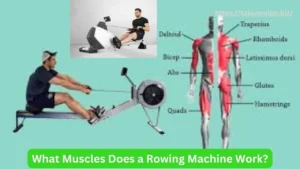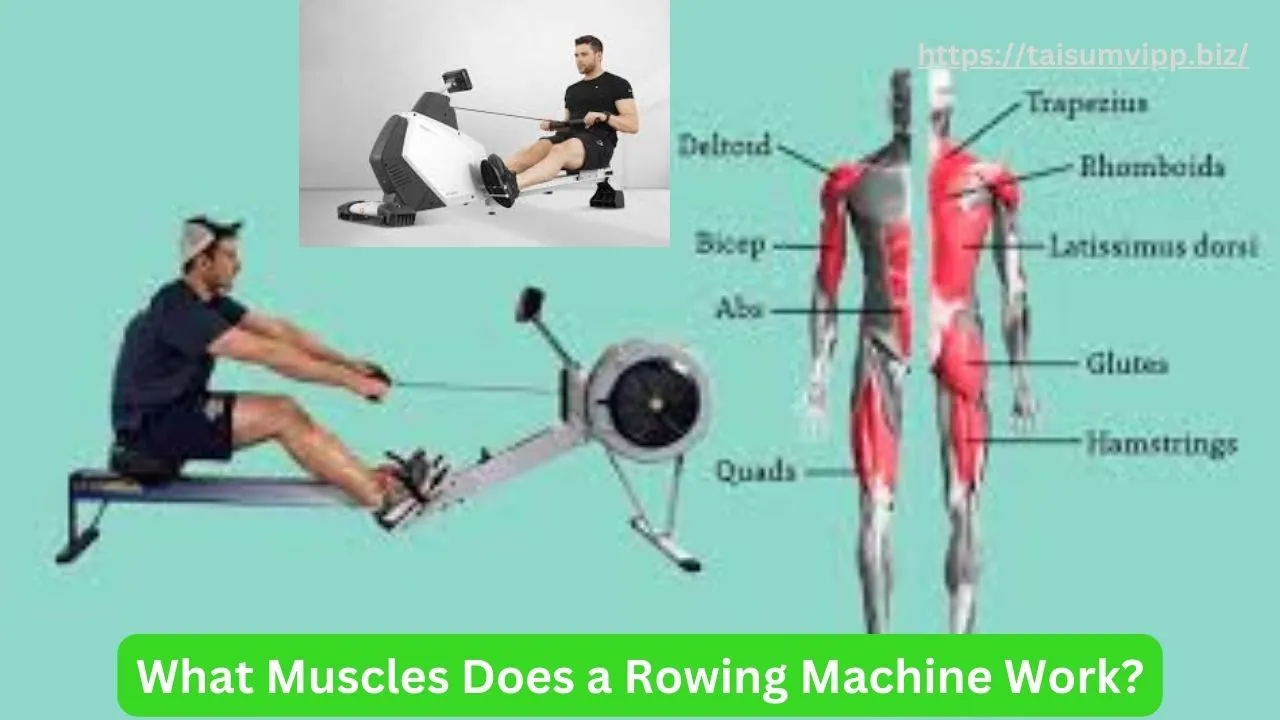Rowing machines are a popular choice for fitness enthusiasts looking to engage in a full-body workout without the impact associated with many other exercises. Understanding how a rowing machine works and the muscle groups it targets can help you maximize your training sessions. This article will dive deep into the mechanics of rowing, the primary and secondary muscles worked, and the various benefits that come from incorporating rowing into your fitness routine.
Understanding the Mechanics of Rowing
The rowing machine simulates the action of rowing a boat on water, allowing for a unique combination of strength and cardio training. When using a rowing machine, the movement occurs in a fluid motion that can be broken down into four main phases: the catch, the drive, the finish, and the recovery. Understanding these phases will shed light on how different muscle groups are engaged throughout the exercise.
During the catch phase, the body is compressed, and the legs are bent while the arms extend forward. This position engages your core and prepares your body for the powerful movements to come. The drive phase is where the action truly begins, as you push with your legs while simultaneously pulling the handle towards your chest. This leads into the finish phase, where your legs are fully extended and the arms are drawn back, utilizing both strength and power.
The recovery phase allows you to reset your position, gradually extending your arms and bending your knees to return to the catch position. This entire sequence repeats, providing an efficient workout that utilizes various muscle groups in a synchronized manner. The rhythmic nature of rowing not only enhances physical fitness but also promotes mental focus, making it a meditative practice for many enthusiasts.
The Role of Upper Body Strength in Rowing
The upper body plays a crucial role in the rowing motion, especially during the drive and finish phases. As you pull the handles towards your body, muscles in the chest, shoulders, and arms are activated to generate the necessary force. Key muscles include the pectorals, deltoids, biceps, and triceps. Strengthening these areas not only enhances your rowing performance but also contributes to overall upper body strength. Additionally, the coordination required to synchronize upper body movements with leg drives can improve overall athletic performance in other sports.

Moreover, maintaining proper form during rowing is essential for effective muscle engagement and to prevent injury. Proper grip and posture ensure that the upper body is utilized effectively without putting unnecessary strain on the shoulders or wrists. Regular practice can help develop muscle memory, allowing rowers to maintain optimal form even as they increase resistance or duration, further enhancing their workout efficiency.
The Importance of Core Stability in Rowing
The core acts as the powerhouse of the body, providing stability and strength during the rowing motion. Rowing requires a stable core to transfer power from the legs through to the arms. The abdominals, obliques, and lower back must engage to maintain proper form and to support the spine throughout the rowing motion. Engaging the core effectively not only aids in rowing but also translates to improved performance in activities that require balance and coordination.
By focusing on strengthening the core, rowers can enhance their overall technique, reduce the risk of injury, and improve their endurance. A strong core allows for better force transfer and power output, which is essential for maximizing workout efficiency. Incorporating core-specific exercises, such as planks and rotational movements, can further bolster stability, ensuring that rowers can maintain control throughout each phase of their workout.
Lower Body Engagement in Rowing
The lower body is arguably the most significant contributor to the rowing motion, especially during the drive phase. As the legs push against the footrests, the quadriceps, hamstrings, glutes, and calves work in unison to propel the body backward. Rowing effectively targets the largest muscle groups in the body, leading to significant strength and endurance gains. This engagement not only builds muscle but also enhances cardiovascular fitness, making rowing a comprehensive workout option.
Proper foot placement and leg extension are vital for maximizing lower body engagement. Rowers must ensure that they extend their legs fully during the drive phase for optimal muscle activation. Regular use of a rowing machine can significantly enhance the strength and endurance of the lower body muscles, making it an excellent choice for those looking to improve their leg musculature. Furthermore, rowing can serve as a low-impact alternative to traditional leg workouts, reducing the risk of joint strain while still delivering impressive results in muscle development and overall fitness. This makes it particularly appealing for individuals recovering from injuries or those seeking a sustainable long-term exercise solution.
The Primary Muscles Targeted by Rowing Machines
Back Muscles and Rowing
Rowing machines provide an excellent workout for the back muscles, particularly the latissimus dorsi, trapezius, and rhomboids. These muscles are primarily engaged during the drive and finish phases as the arms pull the handle towards the chest.
A strong back is essential for overall posture and body mechanics, and incorporating rowing into your routine can help build this crucial muscle group. Strengthening the back can also aid in other physical activities and contribute to better overall strength and stability.
Arm and Shoulder Muscles in Rowing
During the rowing exercise, the arms and shoulders participate significantly. As mentioned earlier, the biceps and triceps are activated when pulling the handle. The shoulders also engage, particularly the deltoids, allowing for a seamless transition from phase to phase.
This collective engagement of the arm and shoulder muscles not only enhances performance on the rowing machine but also contributes to overall arm strength. This is especially beneficial for individuals involved in various sports or activities that require upper body strength and coordination.
Leg Muscles Worked by Rowing
The primary leg muscles worked during rowing include the quadriceps, hamstrings, glutes, and calves. As you push against the footrests, these muscles are engaged in a coordinated effort to generate power. The even engagement of both legs also contributes to muscle symmetry and balance.
Building strength in these areas through consistent rowing workouts can lead to better performance in other athletic endeavors, as well as improved everyday functionality. Additionally, the low-impact nature of rowing makes it a safe choice for individuals of all fitness levels.
Secondary Muscles Worked by Rowing Machines
The Role of the Abdominals in Rowing
While the back, arms, and legs receive substantial focus during rowing, the abdominals also play a critical role. A stable core is essential to maintain proper posture and technique throughout the rowing movement.
Engaging the abdominals helps to protect the lower back by stabilizing the spine, allowing for a more efficient transfer of power between the upper and lower body. Strengthening your abs through rowing can lead to improved core strength and stability, ultimately enhancing your performance.
How Rowing Engages the Glutes
The gluteal muscles are significantly engaged during the rowing cycle, especially during the drive phase where you push off from the footrests. The glutes, particularly the gluteus maximus, contribute to generating the force needed for this powerful leg drive.
This muscle activation not only works toward building strength in the glutes but also plays a role in enhancing overall lower body power and stability, vital for various physical activities.
The Impact of Rowing on the Calves and Feet
Rowing also places a notable emphasis on the calves and feet as they work to stabilize and propel the body forward during the rowing motion. As the legs extend and contract, the gastrocnemius and soleus muscles of the calves are activated, contributing to overall leg movement.
Strong calves are essential for overall athletic performance and can enhance balance and coordination as well. Engaging the feet properly during rowing can also aid in foot strength and adaptability, which are beneficial in a range of sports and physical activities.
The Benefits of a Full-Body Rowing Workout
Cardiovascular Benefits of Rowing
Rowing is an effective form of cardiovascular exercise, offering an excellent means to elevate the heart rate and improve overall cardiovascular fitness. Engaging multiple muscle groups simultaneously leads to an increased demand for oxygen, promoting improved heart and lung function.

Moreover, the low-impact nature of rowing makes it accessible for a variety of fitness levels, reducing the risk of injury while still allowing for an effective cardio workout.
Strength and Endurance Gains from Rowing
The full-body engagement offered by rowing machines leads to significant strength and endurance gains over time. Regular rowing workouts help build muscle strength across various muscle groups while also enhancing muscular endurance, allowing users to row for extended periods without fatigue.
Additionally, the variable resistance settings on rowing machines enable users to gradually increase the intensity of their workouts, further promoting consistent strength and endurance improvements.
Rowing for Flexibility and Balance
Flexibility and balance are often overlooked aspects of physical fitness, but rowing can contribute to both. The dynamic movement of rowing requires coordination and balance, which promotes better body awareness.
Additionally, the stretching motion during the recovery phase helps maintain and improve flexibility, particularly in the hamstrings and hip flexors, which enhances overall functional fitness and reduces the risk of injury.
In conclusion
rowing machines offer a comprehensive workout that engages multiple muscle groups, enhances cardiovascular fitness, and promotes strength and flexibility. Whether you are a seasoned athlete or just starting on your fitness journey, incorporating rowing into your routine can lead to tremendous benefits.
